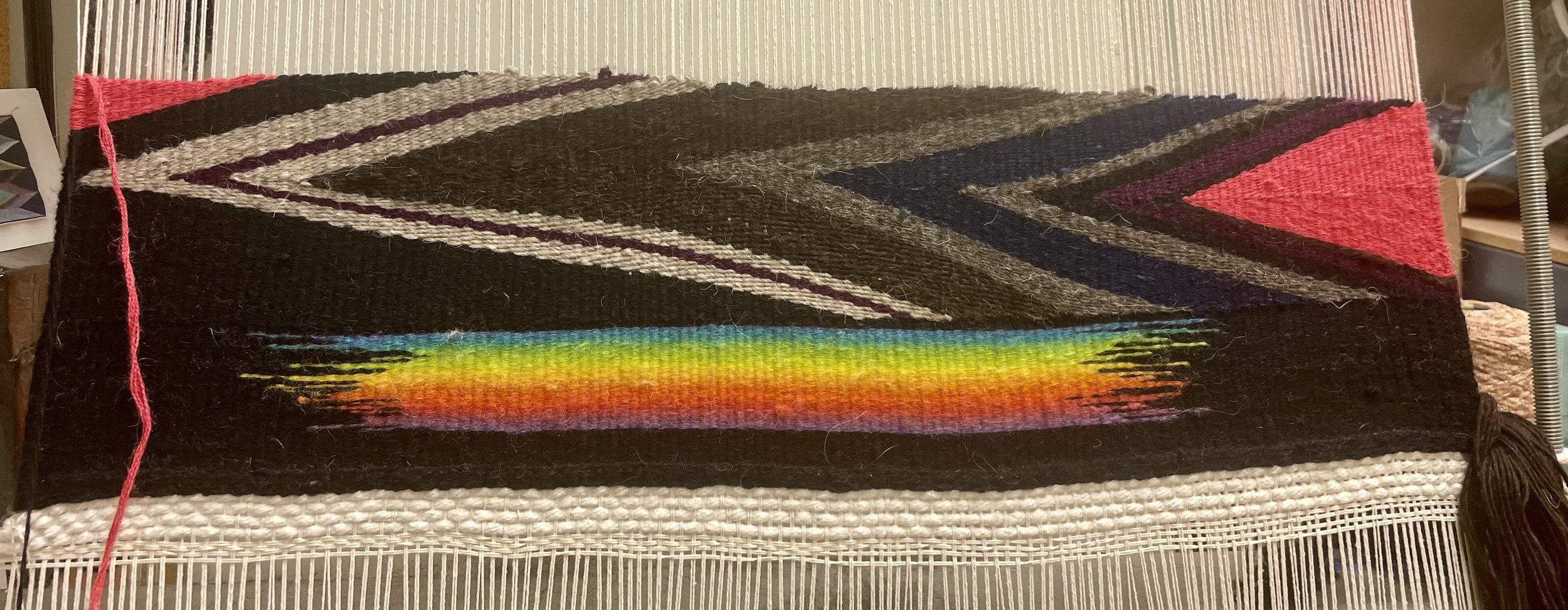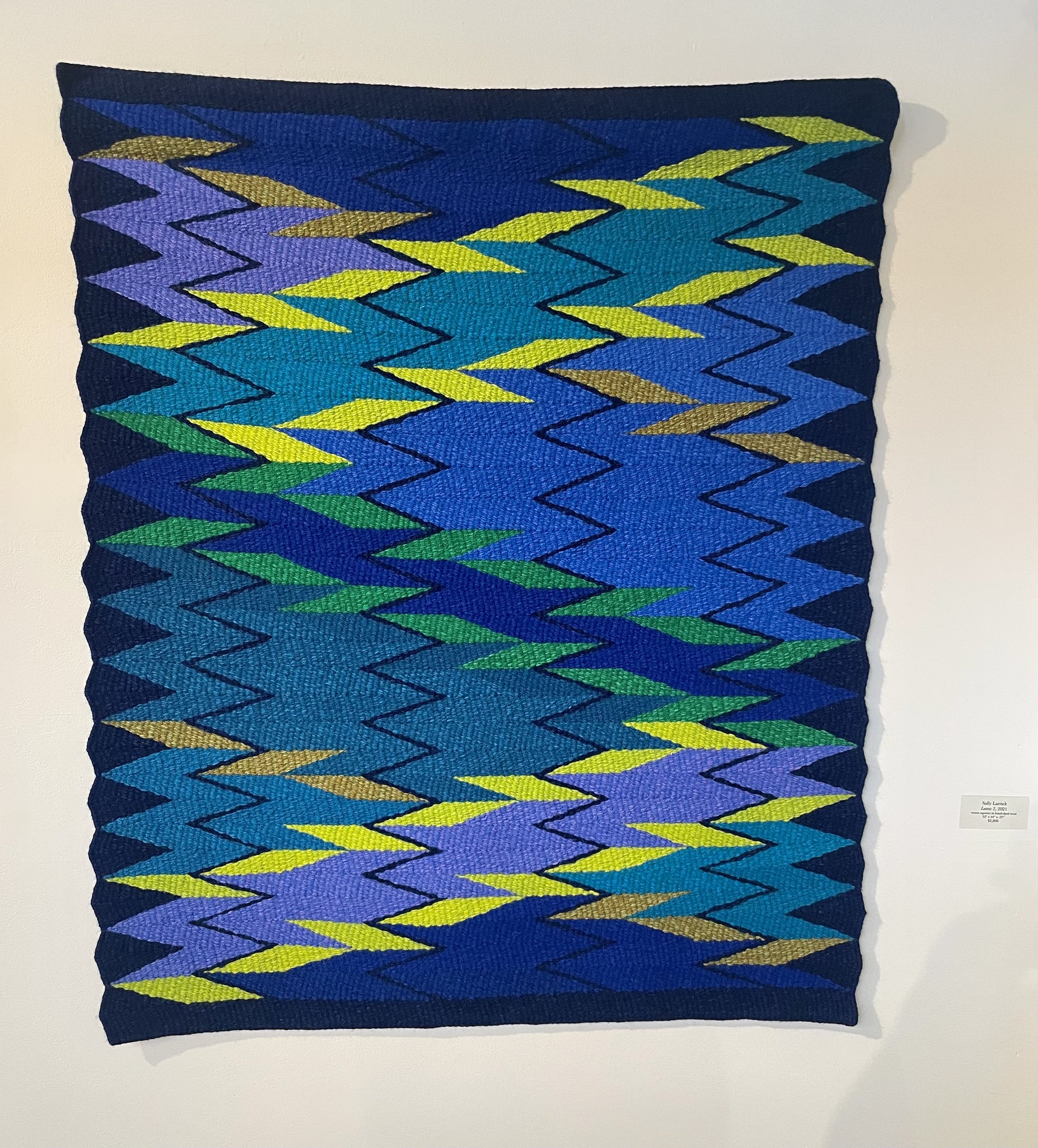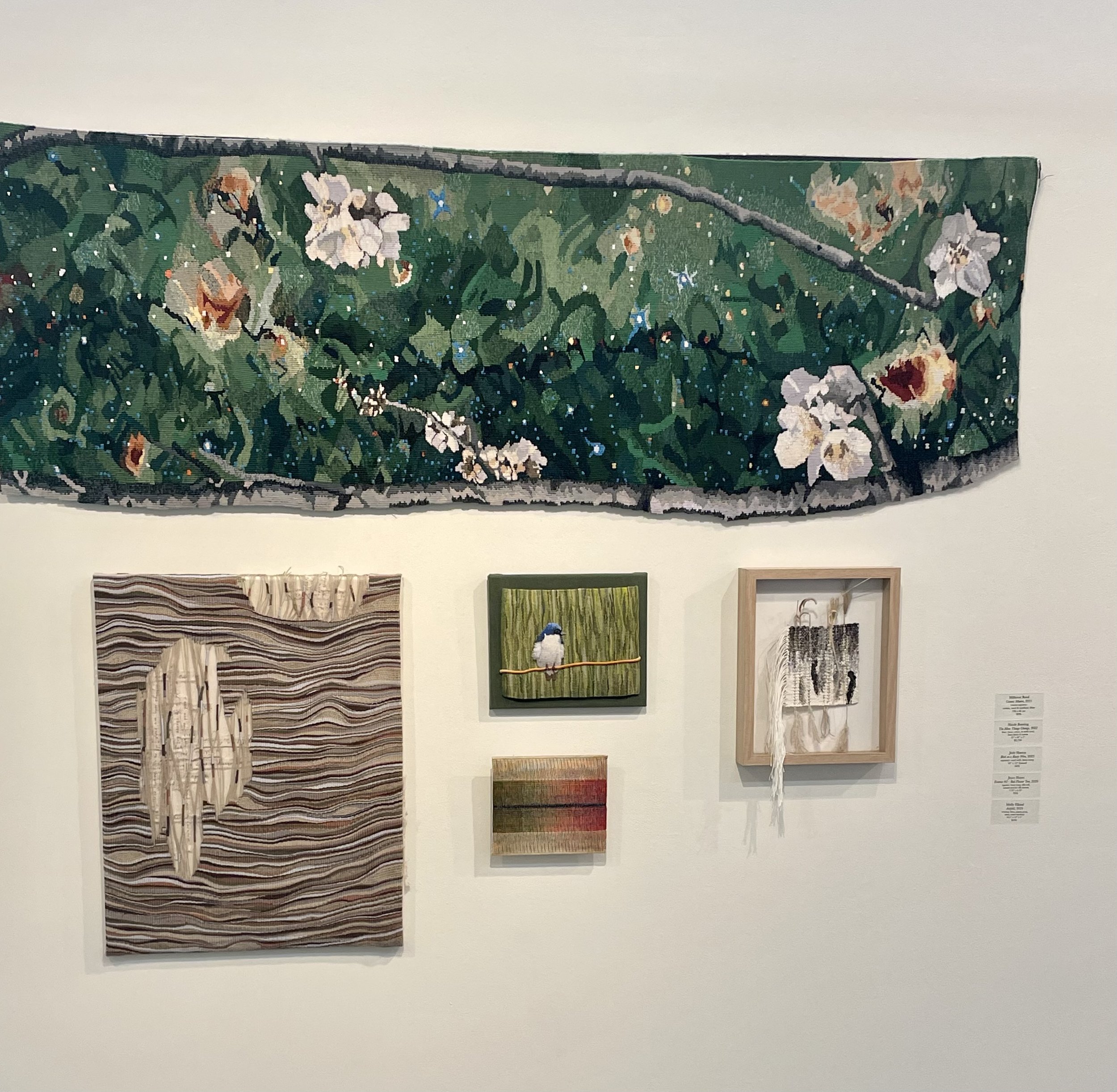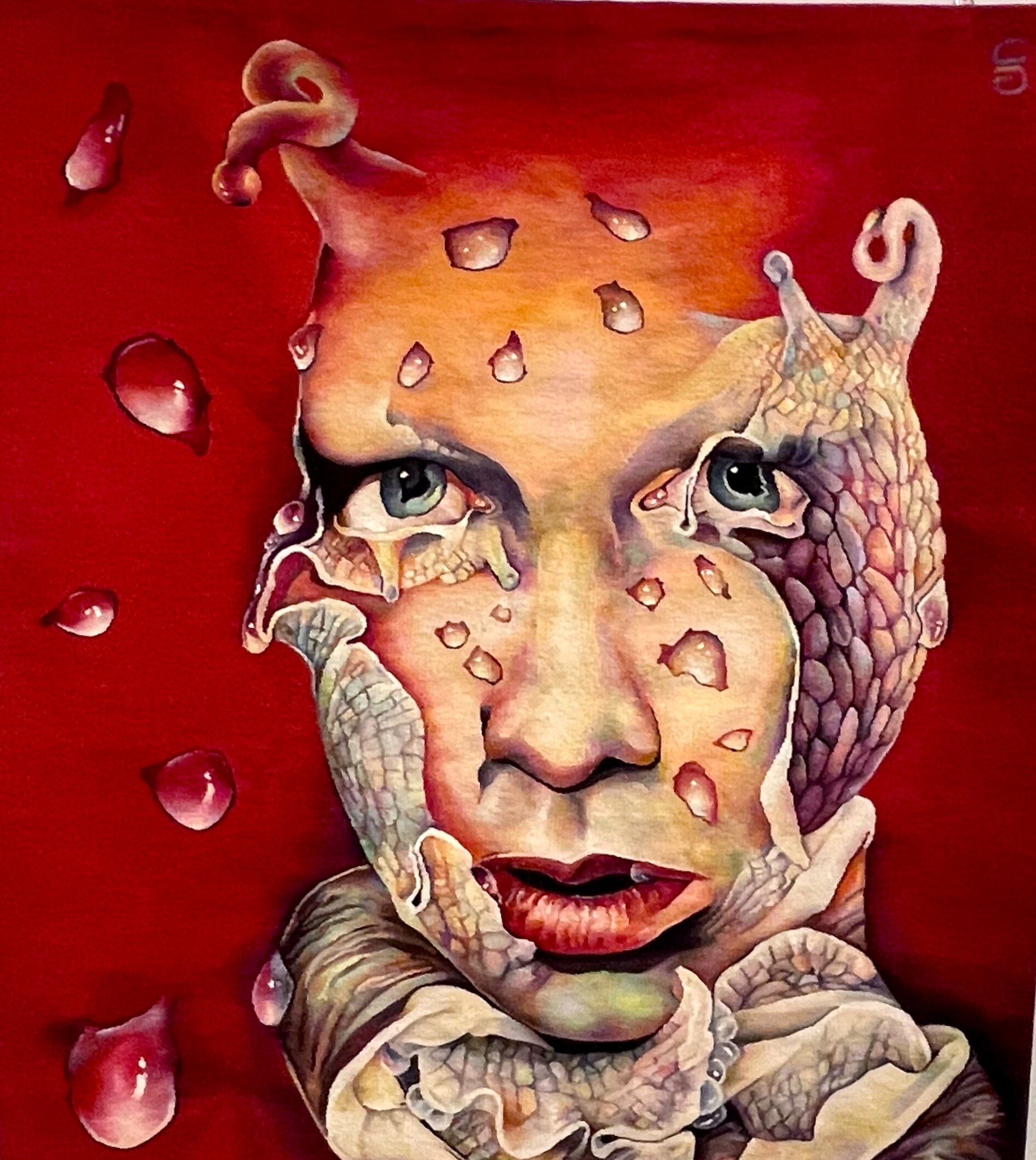Happy New Year! Despite of what we might feel is coming ahead for 2025, it’s still a new year and most of us set goals or make plans for the upcoming year. Since a lot of my personal joy comes from my studio practice (and yes! from life with 3 golden retrievers) I am moving forward as always with my studio goals for the year. There’s quite a lot on my plate and even more ideas being generated while working. The work here in January looks like this: spinning, tapestry weaving and embroidery. To keep up with the work I set a timer for each task to make sure I get at least 30 minutes each day with each project. Then the rest of my time and attention goes to the task with the most work to be done or has a deadline or admittedly just has the most appeal that day. It’s a daily practice technique that many artists have shared with me over the years. Quite simply, 20 - 30 minutes a day gives back so much more than the time spent.
First, here’s a picture of the work in progress!
From left to right: embroidery on eco printed fabric, spinning flax with sari silk scraps, and tapestry diary.
Last year I started looking at how to make the best use of all the yarn and fabric in my stash (collection). So I grabbed all the fabrics, gathered materials from around Vanderbilt and my neighborhood, and began the process of steaming/boiling the materials onto the fabric. There was a lot of satisfaction after this by just finally taking the fabric that had been staring at me for so long and putting it through a process. This is one of those “hit and miss” processes which just makes me happy. I love a process that requires me to expect the unexpected. Afterwards of course they hung around waiting for me to decide what to do next. The answer became clear - play embroidery games. Now, outside of shibori stitches I don’t know anything about embroidery. So some weeks of research went by before putting needle and thread to fabric.
Second in the picture is spinning. I am in my third year of learning/exploring spinning. In the past I’ve always said no to spinning yarn. But after raising silk worms in 2022 and 2023 I knew it was time to try. Practice, practice, practice and lessons from Ginny Maurer, Cassie Dickson and Gigi Matthews have given me a great start.
And third is the tapestry diary. I learned about these from Tommye Scanlin and did one during Covid and the following year (2020 and 2021). I decided this year to bring this back to my studio practice. But instead of dedicating a Mirrix loom for the entire year, I’m using my Judy Walker paper clip loom. Each month will be a different spiral or scarred geometry shape and by the end of 2025 I should have twelve 8”x8” four selvedge tapestries. That’s the plan…
Along with this I am weaving a series on the History of Queer People. These will be wedge weave tapestries to honor the queer people through history and their contributions to society. This first weaving is in honor of all the queer people that were slaughtered and persecuted during the Nazi Holocaust. Here is a work in progress pic of “Silence = Death”.
Each of these 4 things will take time but there are goals in mind. For the next few months the eco prints and embroidery will have most of my focus and energy as they are scheduled for exhibit in April 2025. As I work and create, I’ll write more about each one in separate monthly blog posts. I guess I am going to use writing on this blog as my own method of accountability and of course to share with you as well as hopefully learn from you as well.




























































